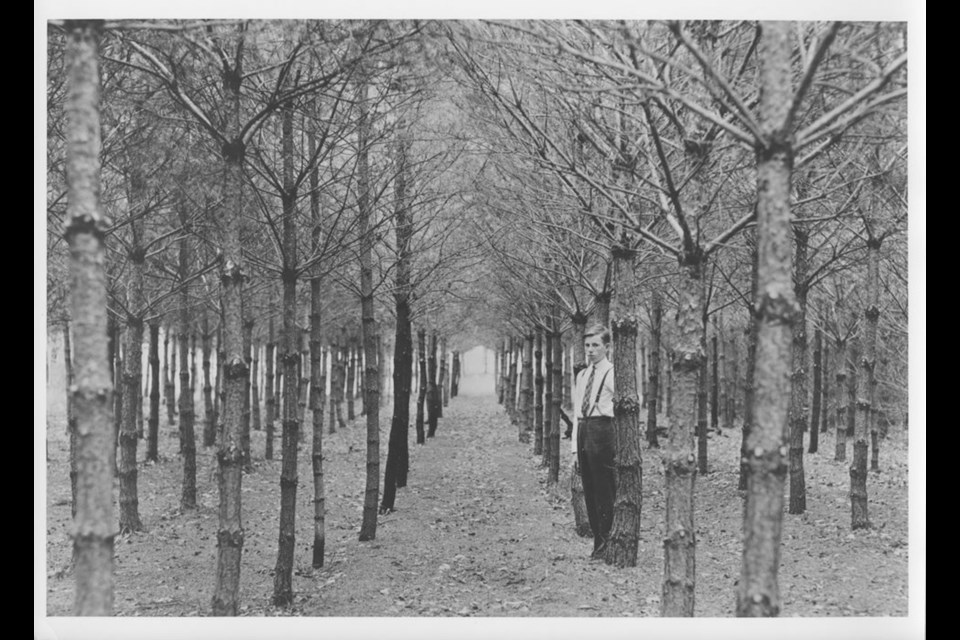NEWS RELEASE
OMAH HISTORY COMMITTEE
*************************
The Orillia Museum of Art and History (OMAH) Speaker Series hosted Graeme Davis, registered professional forester, County of Simcoe, as guest speaker on the subject of The Simcoe County Forest — A Century of Growth and Renewal.
He shared what has been done over the last century to restore a landscape once devastated by logging and forest clearing practices to the vibrantly reforested Simcoe County Forest we have today, now Ontario’s largest community forest.
Way back, before logging, what we now call Simcoe County was covered in stands of massive, stately white pine. Those who came to log the white pine forests claimed there was enough pine to last at least 700 years.
There were over 200 sawmills in the county and railways to ship the pine during the heyday of logging. By the late 1800s, after a few decades of harvesting in Simcoe County, white pine forests were gone. The pine had been felled and cut into planks, which could be shipped on boats to England to be used as masts for British Navy ships.
Settlers perceived trees as obstacles to their plans for farming, so thousands of acres of trees were razed and burned. By the early 1900s, topsoil had been blown or washed away, creating desert conditions in logged-out parts of the county. There were instances of roads having to be plowed in summer to clear away the sand blown onto them. Rivers would flood in spring and dry up in summer, because of the absence of trees.
Our speaker displayed a map labelled ‘Wastelands in Southern Ontario’ to illustrate that the problematic consequences of logging went well beyond Simcoe County. It was recognized by Ontario Premier Drury that the future of agriculture and sustainable life in this province was threatened.
It became the mission of Premier E.C. Drury and Mr. Edmund J. Zavitz to address the problems created in Ontario by logging.
Edmund John Zavitz is known as the father of reforestation in Ontario. The book, Two Billion Trees and Counting, is an account of Zavitz’s work as a forester and is available through Dundurn Press.
Ernest Charles Drury, farmer, politician, writer, local historian, was premier of Ontario from 1919 through 1923 (born at Crown Hill, Ont., Jan. 22, 1878; died at Barrie, Ont., Feb. 17, 1968). (See references.)
In 1922, the Hendrie Tract, in the Anten Mills area, was the first area of reforestation, when 1,344,600 seedlings were planted. From 1920 through 1949, there were 5,050,270 trees planted in Simcoe County. During the 1940s the cost of an acre of land was about $8. As each decade passed, more acreage for forests was acquired and reforestation continued.
In 1996, full responsibility was assumed by Simcoe County from the Province of Ontario for managing Simcoe County Forests. Today, the county manages 34,000 acres, acquiring additional acreage using revenue from harvesting. Tree harvesting Is done according to current best practice by third-party loggers who take great interest in the ongoing health and viability of county forests. Simcoe County Forest land holdings are increasing, while in other jurisdictions, wetlands are being filled to build roads and communities.
Today, Simcoe County Forests are used for various recreational purposes, as well. There’s an ongoing evaluation of levels and types of use that could impact the health of county forests.
One of the latest projects encourages habitat for the rare Kirtland’s warbler, in co-operation with an international group trying to bring this bird back from the brink of extinction.
A continuing challenge for our forests is the arrival of non-native plant species, including the buckthorn tree, which displace native species. Efforts to control invasive species are ongoing.
Graeme Davis, who has been a professional forester for 35 years, is one of 600 licensed foresters qualified to manage forests in Ontario. As Simcoe County forester, he is responsible to plan and manage the growth and sustainability of county-owned forest lands, including the related financial planning and management.
Click on this link to access OMAH’s YouTube channel to hear the recording of Graeme Davis’s talk.
Up next: On Wednesday, March 20, 2024, at 7 p.m. on Zoom, Dr. Cynthia Wesley-Esquimaux will present her talk: The Reality of Reconciliation in Canada and Abroad.
Join the conversation.
To register for the talk visit www.orilliamuseum.org/3-24 or call Monica at 705-326-2159.
References/sources:
www.thecanadianencyclopedia.ca/en/article/ernest-charles-drury
www.dundurn.com/books_/t22117/a9781459701113-two-billion-trees-and-counting
— Written by OMAH History Committee member Janet Houston
*************************
